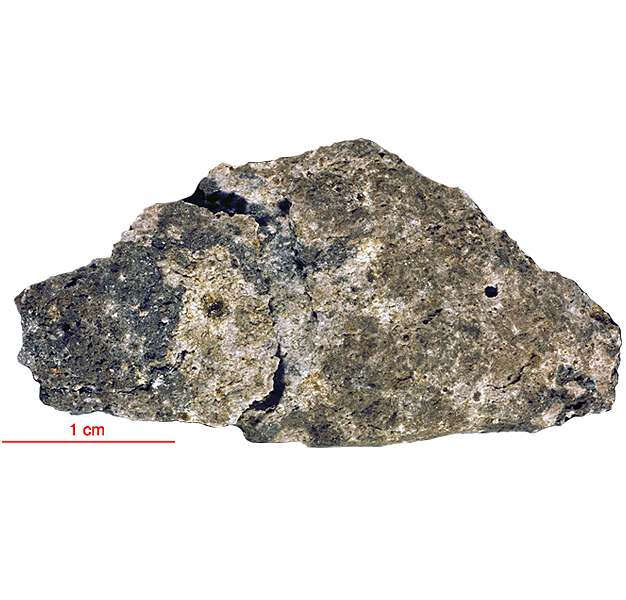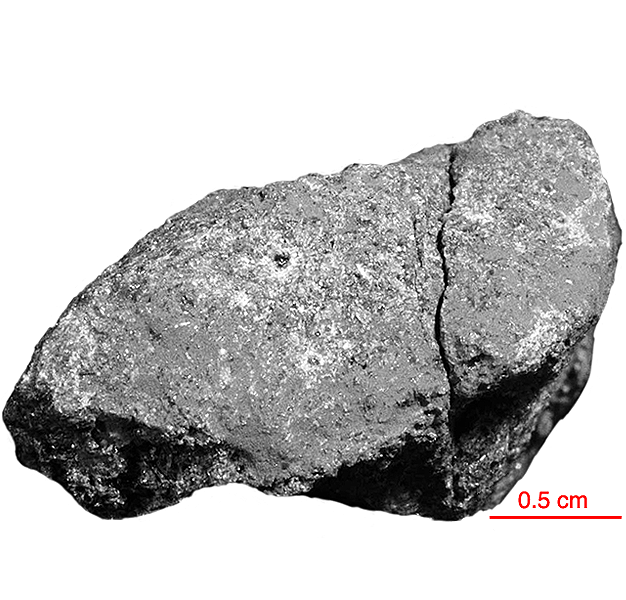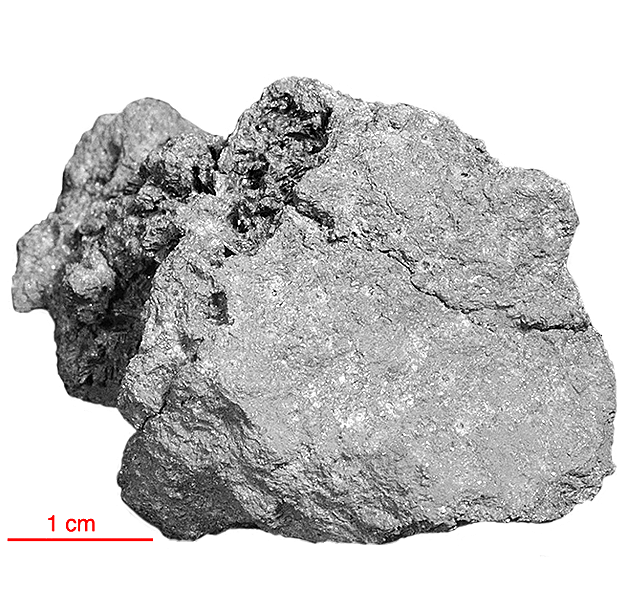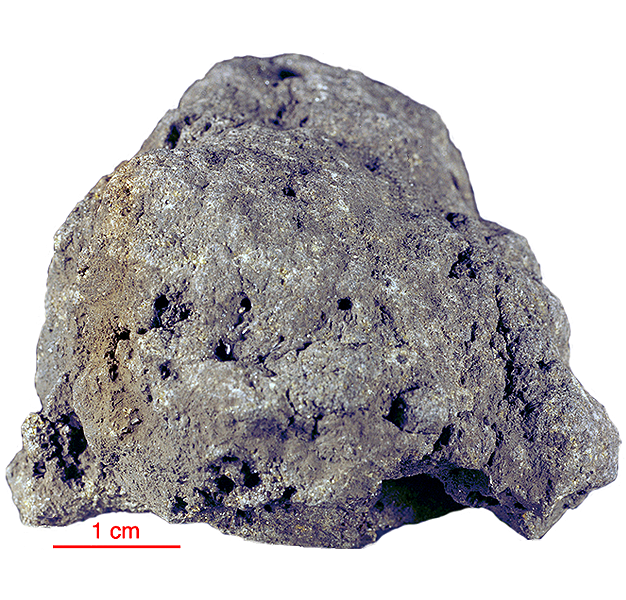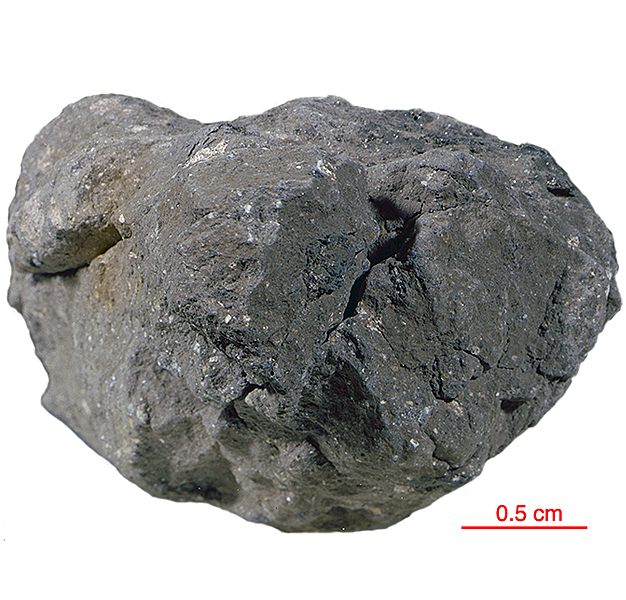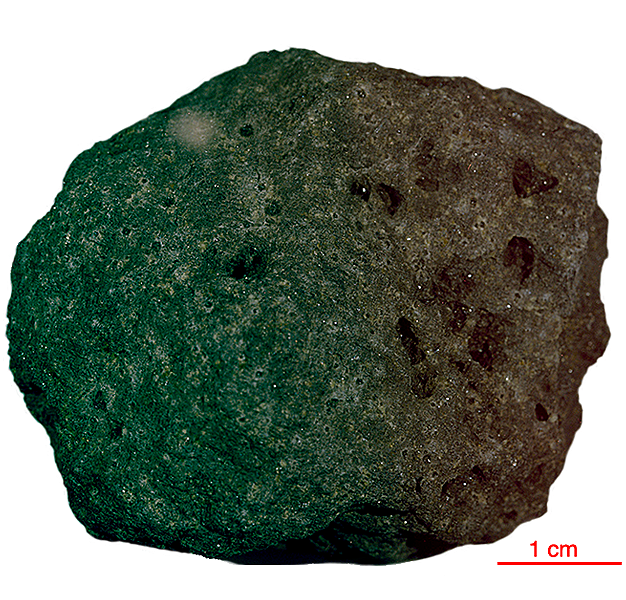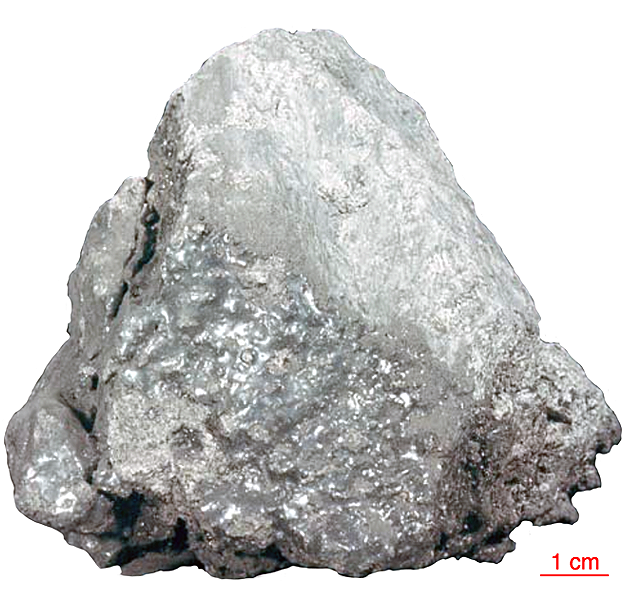
Fact sheet
12054 is a medium-grained, equigranular, with lath-shaped plagioclase and equant to slightly elongate pyroxene intergrown, suggestive of coetectic crystallization. Elongate ilmenite and small segregations of symplectoid mesostasis are common features. 12054 has been shocked to ~250 450 kbars. Diaplectic feldspars are highly fractured. Pyroxene crystals exhibit pronounced undulatory extinction and decreased birefringence.
Note the yellowish-orange glass at the top left of the thin section. The glass contains oblong vesicles (up to 1.2 mm) and schlieren up to 0.4 mm. It is about 0.5 mm thick in most places. Dendrites occur in some of the glass. The glass coating did not form in situ but was deposited as an impact melt splash derived from a basalt similar to 12054 (not soil). 12054 has been used for numerous consortium studies; related to exposure phenomena (micrometeorites, sputtering, solar-flare tracks, ion implantation etc). In fact, this rock was used as a sort of standard for micrometeorite zap pit, cosmic-ray track studies and irradiation history because it had a known orientation, glass coating and relatively simple history.
The sample weighed 687 grams before analysis. It has not been dated.
Further details of this and other Apollo samples are here: http://curator.jsc.nasa.gov/lunar/
Apollo 12 returned 34 kilograms of samples, including 45 rocks, samples of lunar 'soil', and several core tubes that included material from as much as 40 centimetres below the lunar surface.
Apollo 12 rocks were almost all basalts, with only two breccias in the returned samples. The basalts at the Apollo 12 site formed 3.1 to 3.3 billion years ago, roughly 500 million years later than the Apollo 11 basalts. Overall, there is much less of the element titanium in the Apollo 12 samples than in the Apollo 11 samples, which explains the more reddish colour of this region. The differences in age and chemical composition between the Apollo 11 and Apollo 12 samples demonstrate that mare volcanism did not occur as a single, Moon-wide melting event.
Apollo 12 was launched on 14 November 1969.

